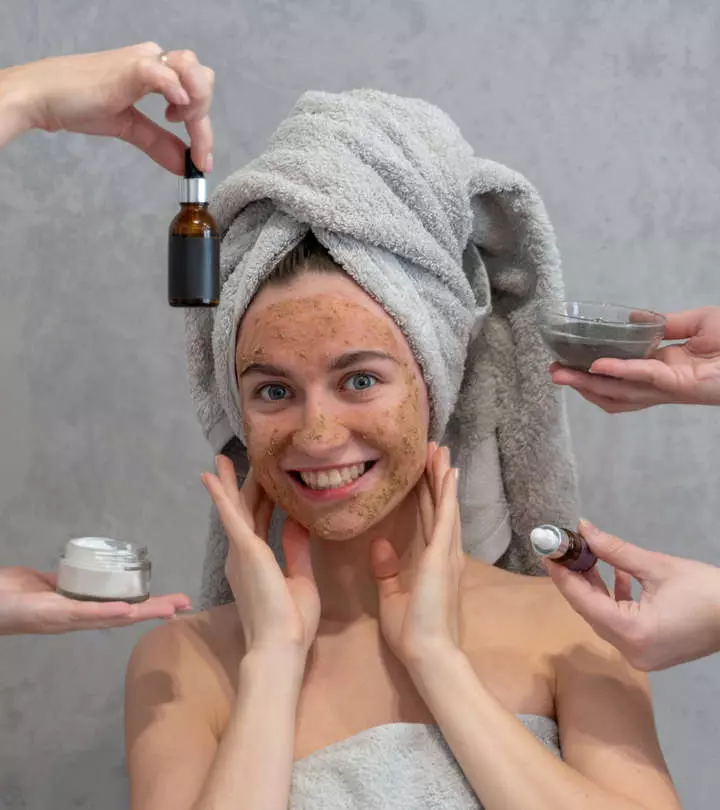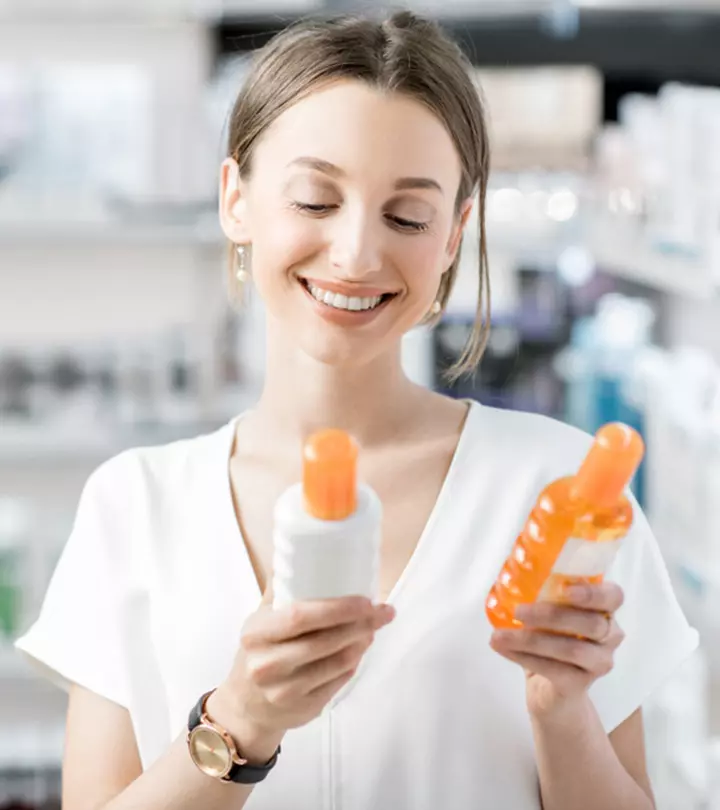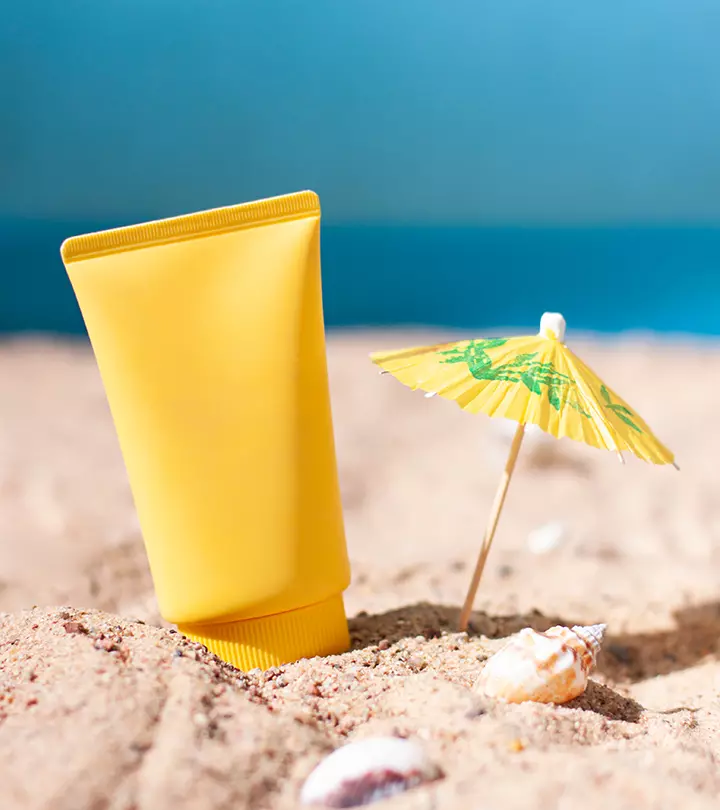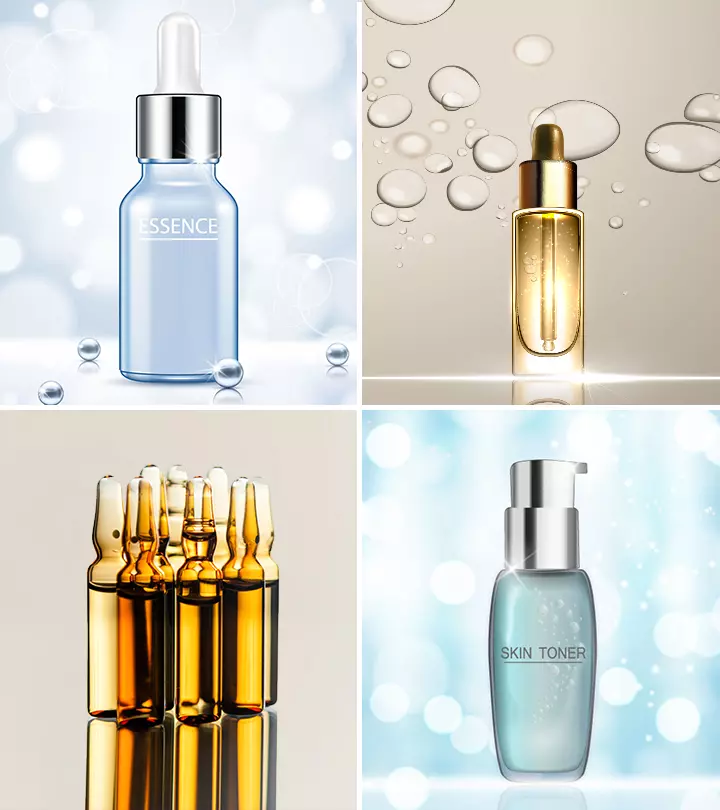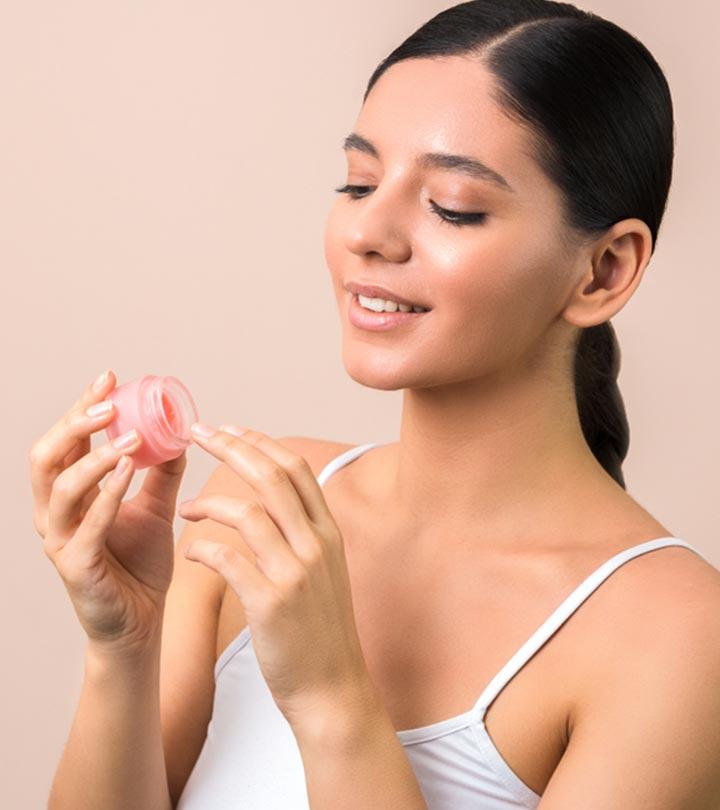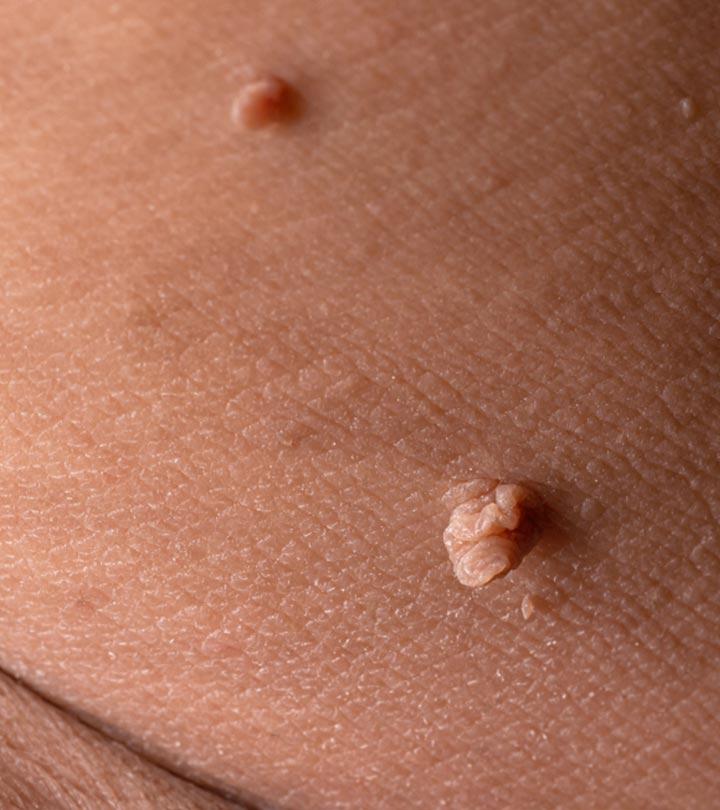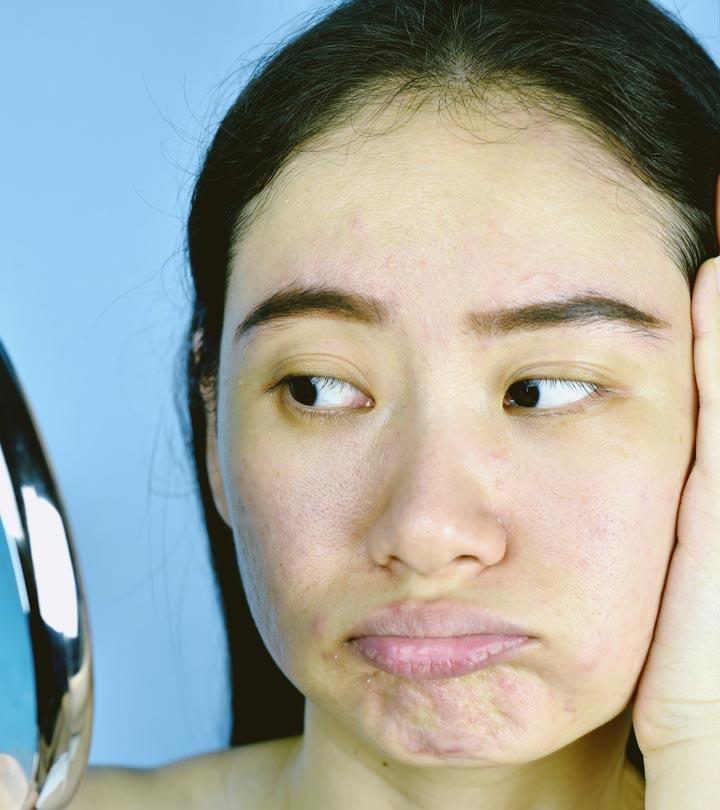Mineral Vs. Chemical Sunscreen: Key Difference Explained
Explore the differences between mineral and chemical sunscreens to choose proper protection.

Image: Shutterstock
Mineral vs. chemical sunscreen – which one is safer for your skin?
Choosing a sunscreen can be quite a daunting task. Naturally, you want the finest products available in the market to protect your skin from the sun’s dangerous UV rays. So, what type of sunscreen should you go for? Some professionals may recommend chemical sunscreens, while others suggest physical and natural sunscreens are better. This article is for you if you have difficulty making the right decision.
Here, we will discuss the two primary types of sunscreen – mineral and chemical sunscreens – and demystify what you need to know about each type. Keep reading to learn more!
In This Article
What Are Mineral Sunscreens?
Also known as physical or natural sunscreens, these contain active mineral ingredients like titanium dioxide or zinc oxide. These mineral ingredients act as a physical barrier and deflect the damaging UV rays away from the skin. Mineral sunscreen starts working as a protective agent as soon as you apply it to your skin.
Next, let us look at chemical sunscreens.
What Are Chemical Sunscreens?
Chemical sunscreens contain non-natural, organic (carbon-based) compounds that create a chemical reaction. They work by converting the UV rays into heat and releasing that heat from the skin. Thus, the sunscreen basically dissipates the UV rays before the damaging rays can get a chance to enter your body.
Chemical sunscreens spread more easily on the skin, which means you do not require huge amounts to protect your skin.
In the next section, we will highlight the key differences between mineral and chemical sunscreens.
Key Differences Between Mineral Sunscreen And Chemical Sunscreen
The major difference between physical and chemical sunscreen lies in how they work.
Physical sunscreen sits on top of the skin and reflects the sun’s harmful UV rays at the surface. In simpler words, they provide external protection. Chemical sunscreen, on the other hand, absorbs the sun’s harmful rays like a sponge. In other words, it provides internal protection.
Moving on, it is time to look at the key ingredients of both types of sunscreens.
Mineral Vs. Chemical Sunscreen: Key Ingredients
Both mineral and chemical sunscreens have different types of active ingredients.
Chemical sunscreens have 16 active ingredients, namely:
1. Cinoxate: This ingredient is often used in the formulation of sun protection products as it has the ability to convert incident ultraviolet radiation into less damaging infrared radiation.
2. Dioxybenzone: This organic compound absorbs UV-B and UV-AII rays.
3. Ensulizole: Also known as phenyl benzimidazole sulfonic acid, ensulizole is a chemical substance that absorbs the full spectrum of UVB rays. However, it does not provide a lot of protection against UVA rays.
4. Homosalate: It is a widely used chemical in sunscreens and skin care products with SPF as it can prevent direct skin exposure to the sun’s harmful rays by absorbing ultraviolet (UV) light. Homosalate specifically absorbs short-wave UVB rays, which are related to DNA damage and increased risk of skin cancer.
5. Meradimate: This ingredient absorbs UV radiation. It is typically used in a 5% concentration in different products as a UV filter. This ingredient has been approved by the FDA and Health Canada and can be used as an ingredient in sun-blocking products.
6. Octinoxate: This chemical can effectively filter out the sun’s UV-B rays. In other words, it can shield your skin from sunburn and skin cancer.
7. Octisalate: Also known as ethylhexyl salicylate and octyl salicylate, it is a chemical ingredient in sunscreen that acts as an effective chemical UVB ray blocker. Octisalate can effectively penetrate into the skin and serve as a UV filter that can absorb harmful rays from the sun.
8. Octocrylene: It captures the harmful UV rays before they can cause damage to the underlying skin cells.
9. Padimate O: It absorbs UV radiation. It is considered to be an active sunscreen agent in cosmetics and over-the-counter sunscreen products in concentrations of up to 8%, as regulated by the FDA.
10. Sulisobenzone: This ingredient is used in sunscreen to block UVA and UVB radiation. It works to filter out both UVA and UVB rays, protecting the skin from sun UV damage.
11. Oxybenzone: It is used as an ingredient in sunscreens and other cosmetics because it can absorb the UV-A rays.
12. Avobenzone: It is commonly used to block the full range of UVA rays and is reported as ’unstable’ in physical sunscreens.
13. Para-aminobenzoic acid (PABA): PABA can absorb ultraviolet (UV) rays – particularly UVB rays, which can cause sunburns and DNA damage.
14. Trolamine salicylate: It acts as a chemical blocker and only provides protection against UVB radiation.
15. Zinc oxide: This ingredient works as a sunscreen by reflecting and scattering UV radiation. This can eventually prevent sunburn and premature aging of the skin.
16. Titanium dioxide: Nanoparticles of titanium dioxide are widely used in sunscreens as protection against ultraviolet radiation. Because these particles are small, they do not reflect visible light and absorb UV light, allowing for a transparent barrier that shields the skin from harmful solar rays.
According to the FDA, only zinc oxide and titanium dioxide are considered safe, both of which are found in mineral sunscreens (1). The other ingredients in physical sunscreens often consist of active minerals.
 Did You Know?
Did You Know?This brings us to the most important question that might be circling your mind: is mineral sunscreen safer than chemical sunscreen?
Chemical Vs. Mineral Sunscreen: Is One Safer Than The Other?
Chemical sunscreens may contain harmful compounds such as oxybenzone and octinoxate that come with major environmental and health concerns (3).
In stark contrast, mineral sunscreens have more effective UV filters, such as zinc oxide and titanium dioxide. Zinc acts as an anti-irritant and is generally well-tolerated by all skin types, including sensitive skin. Moreover, data claims that zinc oxide offers complete UVA protection as opposed to titanium dioxide (4). Hence, mineral sunscreens are the safer alternative.
Next, let’s look at a list of the pros and cons of mineral and chemical sunscreens that will help you understand both variants at a glance.
Pros And Cons Of Mineral And Chemical Sunscreens
Mineral Sunscreen | Chemical Sunscreen |
Pros | Pros |
| It is less likely to clog the pores and offers immediate protection. | It is thin and best suited for everyday use. |
| It is photostable, will not degrade as much under sun exposure, and lasts longer in direct UV light. Hence, it is a safer and more efficient alternative. | It allows for the easy addition of skin-benefiting ingredients such as peptides and enzymes. |
| It can block a wide range of UV wavelengths and offers broad-spectrum protection, including UVA and UVB rays. As a result, it is more suited for sensitive skin. | It gets easily absorbed into the skin and is less likely to leave any residue. |
Cons | Cons |
| It can feel heavy on the skin. | Some brands may contain harmful skin-damaging ingredients. Plus, it may take longer to get absorbed into the skin (about 20-30 minutes). |
| It typically leaves a film on the skin. | It can have adverse side effects such as allergies, skin irritation, etc. |
| Since it can wear off easily, it requires constant reapplication. | If the sunscreen has expired and the ingredients are exposed to direct sunlight, they can break down and cause skin irritation. |
Potentially Harmful Ingredients In Chemical Sunscreens
Avoid chemical sunscreens that contain oxybenzone and octinoxate. These chemicals have photo-allergic (sun allergy) properties (3). Thus, they may cause a rash and other reactions when you step out into the sun.
Oxybenzone can have adverse side effects such as allergic reactions, hormone disruption (estrogenic activity), and cell damage (5). It can also lower sperm concentration in men and testosterone concentration in adolescent males (6), (7). Plus, some variants containing unstable sun filters, such as octyl methoxycinnamate, may break down due to UV exposure and form photoproducts that are potentially toxic (8).
So, make sure to keep an eye out for these ingredients and read the label carefully while buying a product.
In addition, if you’re choosing a chemical sunscreen, look for one with ’non-comedogenic’ and ’broad spectrum’ written on the label. These properties can provide maximum protection without any adverse side effects.
In the next section, we will address some common concerns people have while using sunscreens. Keep reading.
Which Type Of Sunscreen Works Better Under Makeup?
Go for a broad-spectrum sunscreen with an SPF value of 30 or higher. It should also be water-resistant. The sunscreen you choose should seep into your skin easily without leaving behind any residue. Additionally, it should not leave a white layer of film on your skin if you want to put on makeup.
 Quick Tip
Quick TipSpeak to your dermatologist and understand the preferred type of sunscreen based on your skin type and requirements.
Now, let’s answer a very important question.
Which Sunscreen Is Safe For Babies?
When it comes to protecting your baby’s skin, particularly if it is overly sensitive, choosing the right sunscreen is important. However, getting your hands on a safe sunscreen, minus the harmful ingredients, can be challenging.
Sometimes, the chemicals in the sunscreen may get absorbed into the skin, causing irritation and discomfort. In fact, as per a study, trace amounts of at least one sunscreen chemical were found in the breast milk of 76.5% of women participants. Additionally, the harmful compound octinoxate was found in 64.7% of the sampled breast milk. Three other FDA-approved sunscreen chemicals – oxybenzone, octocrylene, and padimate O – were also found in significant amounts (9).
There is not enough research or conclusive evidence guaranteeing the safety of chemical sunscreens for babies. Thus, it is best to err on the side of caution and avoid using them.
You can use mineral sunscreens as they are less likely to seep into the baby’s skin. They remain on the outer layer of the skin (10). However, make sure to read the label and ensure that it does not contain any of the chemical ingredients mentioned above. Some sunscreens advertise themselves as mineral sunscreens but include chemical ingredients in their formulation.
Choosing the right sunscreen plays an integral part in your skin care routine. To know which one suits your skin type and protects you from the sun’s harmful rays, you need to understand the difference between mineral and chemical sunscreens. Mineral sunscreens block the UV rays, while chemical sunscreens absorb the harmful rays, turn them into heat and release that from the skin.
If compared, mineral sunscreens are safer than chemical sunscreens as the latter contain a few harmful compounds. Whichever sunscreen you choose, always do a patch test to ensure you are not allergic to the product or its ingredients. Consult your dermatologist to know more about the different types of sunscreen and choose the one that best suits your skin.
Frequently Asked Questions
Do dermatologists recommend mineral or chemical sunscreen?
Dermatologists generally recommend using a sunscreen that suits your skin. However, mineral sunscreen is usually safer than chemical sunscreen.
Is mineral or chemical sunscreen better for acne?
If you have acne-prone skin, it is best to use mineral sunscreen. Always do a patch test before applying anything to your acne-prone skin.
Is mineral sunscreen better for sensitive skin?
Yes, mineral sunscreen is better for sensitive skin as it causes less irritation and contains well-tolerated ingredients.
Key Takeaways
- Mineral sunscreens have active mineral ingredients that act as a physical barrier to reduce sun damage.
- Chemical sunscreens contain non-natural compounds that convert the UV rays into heat.
- Mineral sunscreens offer external protection, while chemical sunscreens give internal protection.
- Mineral sunscreens are preferred by many because of the zinc oxide and titanium dioxide in them.
Explore the difference between mineral and chemical sunscreens in the video below. Learn about the benefits of each and how they compare to each other to make an informed choice for effective sun protection tailored to your skin’s needs.
References
Articles on StyleCraze are backed by verified information from peer-reviewed and academic research papers, reputed organizations, research institutions, and medical associations to ensure accuracy and relevance. Read our editorial policy to learn more.
- FDA advances new proposed regulation to make sure that sunscreens are safe and effective
https://www.fda.gov/news-events/press-announcements/fda-advances-new-proposed-regulation-make-sure-sunscreens-are-safe-and-effective - Rosacea: a clinical review
https://www.ncbi.nlm.nih.gov/pmc/articles/PMC5134688/ - Titanium dioxide and zinc oxide nanoparticles in sunscreens: focus on their safety and effectiveness
https://www.dovepress.com/titanium-dioxide-and-zinc-oxide-nanoparticles-in-sunscreens-focus-on-t-peer-reviewed-fulltext-article-NSA - Update About the Effects of the Sunscreen Ingredients Oxybenzone and Octinoxate on Humans and the Environment
https://www.researchgate.net/publication/329333561_Update_About_the_Effects_of_the_Sunscreen_Ingredients_Oxybenzone_and_Octinoxate_on_Humans_and_the_Environment - Dermatological and environmental toxicological impact of the sunscreen ingredient oxybenzone/benzophenone‐3
https://www.researchgate.net/publication/320731138_Dermatological_and_environmental_toxicological_impact_of_the_sunscreen_ingredient_oxybenzonebenzophenone-3 - Urinary concentrations of benzophenone-type ultraviolet light filters and semen quality
https://pubmed.ncbi.nlm.nih.gov/26253817/ - Serum Testosterone Concentrations and Urinary Bisphenol A Benzophenone-3 Triclosan and Paraben Levels in Male and Female Children and Adolescents: NHANES 2011–2012
https://ehp.niehs.nih.gov/doi/10.1289/ehp150 - Toxicity and Phototoxicity of Chemical Sun Filters
https://www.researchgate.net/publication/31169406_Toxicity_and_Phototoxicity_of_Chemical_Sun_Filters - Endocrine Active UV Filters: Developmental Toxicity and Exposure Through Breast Milk
http://www.snf.ch/SiteCollectionDocuments/nfp/nfp50/nfp50_article_chimia_2008_345.pdf - A review of the scientific literature on the safety of nanoparticulate titanium dioxide or zinc oxide in sunscreens
https://web.archive.org/web/20110406145019/http://www.tga.gov.au///npmeds/sunscreen-zotd.pdf
Read full bio of Dr. Schwarzburg
Read full bio of Ramona Sinha
Read full bio of Monomita Chakraborty






